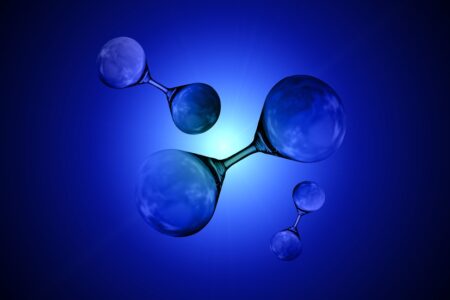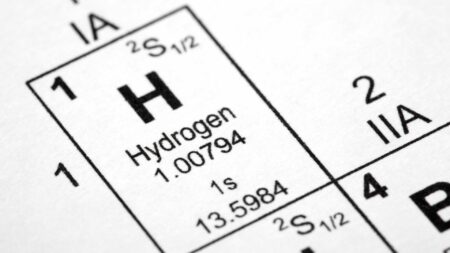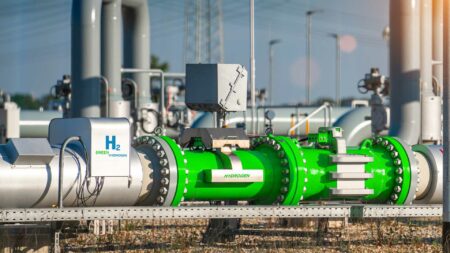In a demonstration project commissioned by the New York Power Authority (NYPA), carbon dioxide (CO2) emissions decreased by about 14% when natural gas and 35% hydrogen by volume were combined to generate electricity. These emissions could continue to decline with the addition of more hydrogen to the mixture.
In collaboration with the Low-Carbon Resources Initiative of the Electric Power Research Institute and General Electric, NYPA performed the hydrogen blending on an LM6000 gas turbine at its Brentwood Power Station on Long Island (GE). Green hydrogen mixes ranging from 5% to 44% by volume were used to power the GE turbine. According to preliminary findings, CO2 emissions might be completely eliminated at a rate of 100% hydrogen cofiring.
The study discovered that using already-existing control systems, other pollutants, such as nitrogen oxide (NOx), carbon monoxide (CO), and ammonia levels, were maintained below legal operating permit limits during steady water injection settings. The location and design of the Brentwood facility were factors in the project partners’ decision. These, along with Brentwood’s very low peaking unit capacity factor, made it easier to make the short-term adjustments needed for the demonstration project.
According to NYPA, the demonstration project, which ran from the fall of 2021 to this spring, had no effects on the facility. The blending was not done when the machine was starting up or shutting down.
The study found obstacles in addition to the good news regarding CO2 emissions. As the hydrogen fuel fraction rose, gas turbine outlet NOx levels increased by up to 24% at constant water injection rates based on burning natural gas. Due to the single annular combustion method used in the LM6000 gas turbine, NOx control needs water injection. In order to manage NOx and CO emissions, the plant also has post-combustion catalyst systems.
The study’s findings showed that gas turbine outlet NOx levels could be kept constant as hydrogen fuel was increased to larger than 35% by volume by increasing water injection rates less than 20% by volume. It took almost a linear increase in the water injection flow rate to maintain a consistent turbine outlet NOx level while increasing the hydrogen fuel percentage at the same turbine load.
Researchers emphasized that in fact, owners may need to make modifications to maintain stack permit compliance if increasing water injection rates to maintain stable NOx levels is not an option and turbine output NOx levels rise. Costs associated with operations and maintenance (O&M) and capital expenditures can rise as a result.
On the other hand, as the amount of hydrogen fuel rose during testing, CO levels dropped by as much as 88%. CO levels fell with increasing hydrogen percentages even while water injection rates for NOx control were increased.
A zero-emission electrical industry must exist by 2040, according to New York. The Climate Leadership and Community Protection Act, sometimes known as the Climate Act, mandates that by 2030, 70% of New York’s electricity would come from renewable sources. By 2040, it is intended to have an emissions-free power sector, and by 2050, the entire economy should emit no greenhouse gases.








